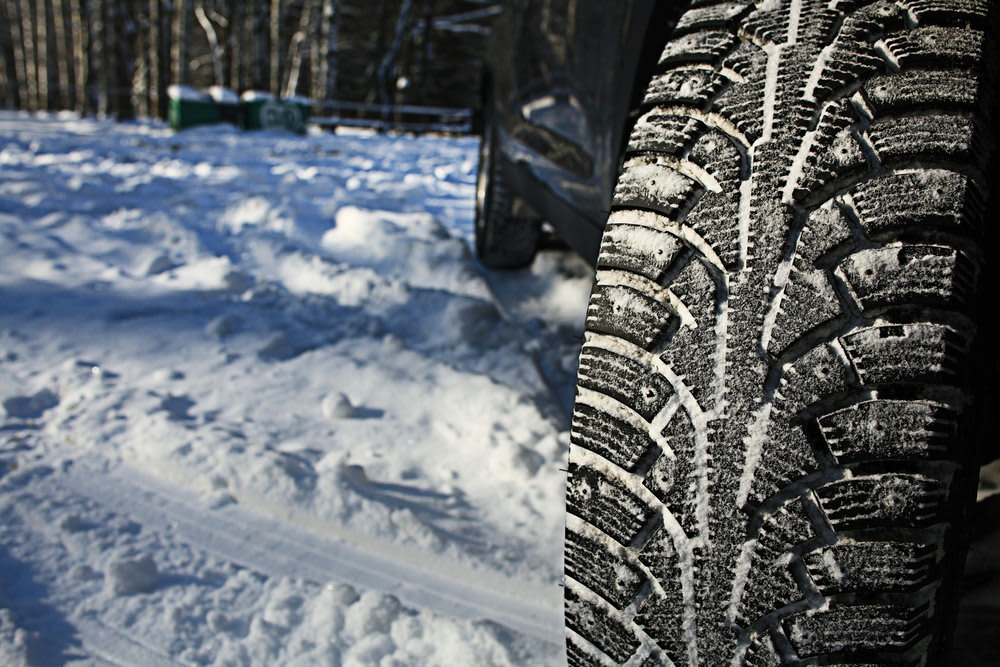

Your knuckles are white as you grip the steering wheel - and it’s not only because it’s cold. The wind is blowing strong from the north, polishing the roads to a deceptively dull shine. You struggle to maintain control of your car as that strong north wind pushes you around. You’ll need to slow down even more, but you don’t dare hit the brake pedal. You don’t want to lock the brakes up and slide.
If you drive in a cold climate with ice and snow as a regular part of winter life, this scenario will hit home. It’s common for even the most experienced driver to make small driving errors that can turn into costly accidents, or worse yet, injuries. In the past decade, snow tires - also commonly referred to as winter tires - have become increasingly popular for states that experience long, snowy winters.
Snow tires grip the icy road better than all-season tires. They provide better traction on acceleration, but most importantly they drastically reduce the stopping distance when braking when compared with their all-season and summer tire counterparts.
What Makes Snow Tires Special
Tire manufacturers have offered different grades of rubber tires for a century. The tires have different uses based on their make-up, and snow tires are no different. Snow tires are made to stay softer than ordinary summer or all-season tires once the mercury drops. Their rubber compound contains more silica which keeps the tire from hardening to the firmness of a hockey puck.
Winter tires are manufactured with many more sipes than all-season tires. Sipes are the small lines visible in each tread block around a tire. As the sipes make contact with the icy road surface, they open up and grip like hundreds of tiny fingers on your tire. The softness of the rubber allows for the sipes to open wider than all-season tires.
There are a variety of snow tires by many different manufacturers. Some brands have tire models that can be studded. Studs can be inserted into small cavities in the tread blocks of the tire, and act as picks into an icy surface. The stud is made of an extremely hard tungsten carbide pin housed in a metal jacket, and protrude a mere millimeter from the tread. The stud bites into an icy surface for enhanced traction.
When To Use Snow Tires
An ordinary all-season tire begins to harden and lose effective grip at temperatures at or below 44 degrees fahrenheit, or 7 degrees celsius. The tire goes from pliable to hard, and isn’t able to grip the road surface well. Winter tires are soft and pliable at much lower temperatures, down to minus 40 fahrenheit and beyond. This means they will continue to provide grip on icy and dry surfaces where all-season tires would not perform well.
When Should Snow Tires Come Off?
Since snow tires are much softer than all-season or summer tires, warm driving conditions will cause them to wear out significantly faster. When the thermometer reads 44 F consistently, it’s time to switch your tires back to all-seasons. Driving even a few thousand miles in warm spring or summer weather can literally wear your snow tires down to a level that will be ineffective for the next cold season.
Are Snow Tires Safer?
Your safety, and the safety of your passengers, doesn’t rely on your vehicle. It relies on you as a driver. Snow tires dramatically improve your traction to the road, but they can’t eliminate all the dangers of winter driving. As is the case even in warm weather, driving in a style that matches the road conditions is the only way to reduce the danger. If you must drive in inclement weather, reduce your speed and be aware of other drivers around you. If you have made the smart decision to equip your vehicle with snow tires, be sure to give room for traffic around you that may not have snow tires installed.



